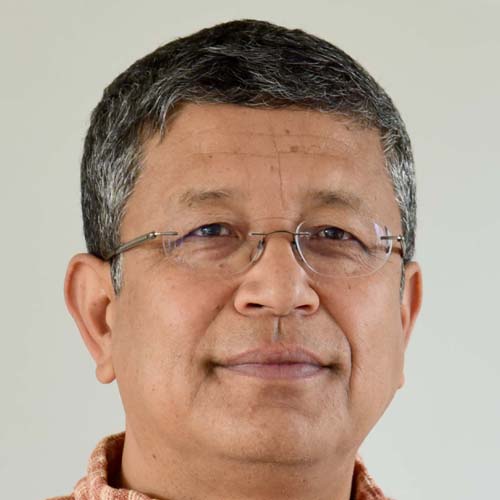Opinion
Counting heads
Fixed boundaries do not necessarily create fixed citizenships
Deepak Thapa
We do not know for sure whether the Home Minister of India, Rajnath Singh, said that there are 1 crore Indians living in Nepal. A respectable Indian publication reported it and the Embassy of India in Kathmandu duly refuted it. And there the matter stands. That was in August 2015, in the lead up to the promulgation of the constitution that has resulted in the ongoing political impasse.
The question of Indians in Nepal and how that fact squares with Madhesis from Nepal’s Tarai is much more complicated than a (non)statement or two can elucidate. But, here, I want to deal with its corollary: Nepalis in India. Only in the numerical sense since issues such as identity are much more complex than a newspaper column allows space for.
When dealing with groups of people living in adjacent territories, it is never clear when someone becomes a citizen of one or the other—until the taxman cometh, that is. For, in some regions, people came or went with the territory. Hence, the few inhabitants from the Darjeeling hills would have found themselves paying taxes to a company in London after 1816. Likewise, some decades later, everyone living in the four western Tarai districts that make up what is still referred to as Naya Muluk would have woken up to the fact that they had become subjects of a ruler in faraway Kathmandu instead of the British protectorate based in Lucknow.
Conflicting numbers
Despite the long history of Nepali migration to India definite numbers are difficult to come by. There are some indications though, for instance, in the 1931 Census of India, which states: ‘Bengal’s immigrants include some 250,000 Nepalis.’ Interestingly, the 1931 Census also identified a trend that would have an unfortunate bearing decades later: ‘...[in Assam] the Nepali immigrant is fortunately decreasing in numbers, and the increase of Nepalis at this census has fallen from 89 to 36 percent. The decrease is attributed to action taken by the Nepal Government to discourage the emigration of its subjects. At the same time they are inconveniently numerous in the Khasia Hills [i.e., Meghalaya] where “in the interests of the Khasi population some measures appear necessary to prevent any further expansion of Nepali colonisation”.’
Regular censuses are undertaken in the same year in both countries, and yet we are no closer to learning actually how many Nepalis live in India than in 1931, with that neatly rounded figure for Bengal. There appears to be uncertainty even with regard to the number of Nepalis in India’s armed forces. Researching the subject with a colleague a couple of years ago, the best we could find was as follows: In 2009, a press statement from the Indian Embassy in Kathmandu said that there were more than 40,000 Nepalis serving in the Indian Army then. Three years later, The Hindustan Times said that nearly 30,000 Nepalis, including 120 officers, were working in the Indian Army. Just two months afterwards, The Times of India reported that over 25,000 men were serving in the seven Gorkha Rifles regiments in the Indian Army; roughly 20,000 more were in the police and paramilitary forces like the Assam Rifles.
If the Indian government cannot say for sure how many Nepalis serve in its security services, one can imagine what the data on ordinary folks is. According to the 2011 Indian census, there are 571,721 Nepalis living in India while the figure in 2001 was 596,696. Nepali census figures are somewhat different. The number from 2001, at 589,042, is somewhat similar to the Indian census, but in 2011 there is significant variance, with the Nepali census showing 720,892 living in India.
This has partly to do with how these numbers are arrived at. For the Nepali census, anyone living in India for the previous six months or more gets counted as living in India. On the other hand, the Indian census records where an individual has come from and duration of residence at the place of enumeration. Thus, Nepalis who moved to, say, Raipur of Chhattisgarh, for ‘less than 1 year’ and so on up to ‘20+ years’ all get counted, in effect, as Nepalis. But a Nepali who came to Raipur from nearby Nagpur is not likely to be counted as one, since the census distinguishes only ‘place of last residence’ and she would count as someone from Maharashtra.
What is noteworthy though is the drop in the number of Nepalis in India, in absolute terms according to the Indian census and in proportion according to the Nepali one. Thus, according to the Indian census, the Nepali population in India dropped by 4 percent between 2001 and 2011, even though the Nepali census shows an increase of 22 percent. But the Nepali census shows that the proportion of Nepalis going to India compared to those going to other countries dropped by more than half, from 77 percent to 38 percent.
Existing complexities
Another factor to be noted is the difference in terms of gender in the two censuses. The Indian census records the Nepali population in India to consist of 45 percent male and 55 percent female in 2001 and 46 percent and 54 percent respectively in 2011, whereas the Nepali census has 88 and 11 percent in 2001 and 84 and 16 percent in 2011. The best explanation we could provide for this discrepancy was ‘the large number of Nepali women, girls and children in Indian brothels, circuses and mines; cross-border marriages that result in many Nepali women settling in India; seasonal labour migrants who travel frequently across the border; imprecise definition of who Nepali migrants are and who Indian citizens of Nepali origin are by the Indian census; and migration of whole families to India that do not get recorded in the Nepali census’.
This brings me to a personal story. While studying in India in the 1970s and early 80s, I remember my host families taking out then-precious ration cards for me. At a time when everyone relied so heavily on the subsidised food the card entitled one to, it was a purely rational move since it was clear that I was a school student from Nepal who would return home after my studies. India has now introduced the national ID card but it has yet to reach all parts of India and the ration card still functions as the main proof of one’s residence. I do not imagine my hosts have retained my ration card since the families have long since split up and, more importantly, having moved up in the world with the rest of the Indian middle class, the ration card does not hold the same significance for them now. But, in the deep recesses of Indian babudom, there are perhaps files attesting to my being domiciled in India and, by extension, perhaps also to being Indian. Such are the complexities of neighbourly relations.




 16.4°C Kathmandu
16.4°C Kathmandu












